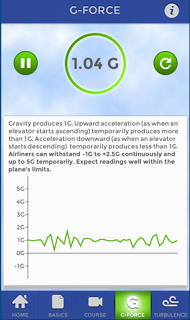On 11 December 2013, the NTSB conducted a day-long investigative hearing into the 6 July 2013 crash of Asiana flight 214 in San Francisco, featuring public testimony from representatives of Boeing, Asiana Airlines, and other organizations directly involved in the accident and the subsequent investigation. While the NTSB had previously released to the public substantial amounts of information about the accident, there was quite a bit more new material presented at the hearing.
For a summary of the hearing, listen to the Al Jazeera America interview featuring their transportation contributor Dr. Todd Curtis.
The amount of information presented at the hearing was noteworthy, as was the way that it was released. Like it has since the day of the accident, the NTSB has been very innovative in the way that it has used the Internet to get information very quickly to the public. This article describes some of the information presented in the hearing, and also points out some of the areas where the information released could be incomplete or misleading.
The purpose of the investigative hearing
The NTSB holds public hearings during major accident investigations for many reasons, among the most important is making the public aware of the progress of the investigation, and to focus attention on the key areas of the investigation. While the key parties involved in the investigation, most notably Boeing and Asiana airlines, provided testimony and answered detailed questions from NTSB Board members, they have all been closely involved with the investigation from the beginning, and have likely already provided the same information to the investigators.
The public testimony is more of an opportunity for the media and the general public, including accident victims and their families, to learn additional details of the investigation and to get an idea of where the investigation is heading.
What the NTSB discussed
The NTSB investigative hearing focused on five areas:
- Boeing 777 flight deck design concepts and characteristics
- Asiana pilot training on Boeing 777 automated systems and visual approach procedures
- Effects and influence of automation on human performance in the accident sequence
- Emergency response
- Airplane cabin crashworthiness and occupant protection.
The investigation is far from complete
The investigative hearing is only part of the accident investigation process, focusing on the factual aspects of what happened in the accident and the initial emergency response to the crash, as well as factors that may have played a role in circumstances that led up to the accident or that affected the emergency response.
Hearing testimony provided insights into the "what happened" kind of questions being asked by the NTSB, such as what was the sequence of events that occurred immediately before and after the accident, as well as insights into "why it happened" questions such as the kind of training provided to the flight crew on the accident aircraft. The latter parts of the investigation focuses on answering "why it happened."
Other "why it happened" type of questions may address issues or explain circumstances that happened days, months, or even years before the accident, and that may have led to the situations that allowed the accident to occur and that may have made deaths and injuries either more or less likely once the accident occurred. The hearing didn't fully answer all of the "what happened" and "why it happened" questions. Complete answers to these questions, and well as recommendations for changes and improvements, will likely not happen until the final report is published.
These recommendations, which are answers to "what should be done" questions, typically, but not always, get answered at the time the final report is published because much of the analysis of the accident happens after the NTSB and their investigative partners have had an opportunity to sort through information from a variety of sources. NTSB final reports have a similar organization, and typically have three sections; Findings, Probable Cause, and Recommendations, that are associated with the three kinds of questions mentioned earlier. The "Findings" section would answer the "what happened" questions, the "Probable Cause" section would answer the "why it happened" questions, and the "Recommendations" section would address the "what should be done" questions.
Key implied "what happened" questions
While the investigation is not complete, and other factual information may come to light later, the testimony provided in the hearing implied that the following scenario led to the crash:
- Although the glideslope portion of the landing runway's instrument landing system was not operational, and the crew was vectored for a visual approach to the landing runway, the Asiana crew decided to used both the autothrottle and autopilot during their landing.
- The autothrottle was being used to control airspeed, and the autopilot was being used to control the flight path.
- During the latter part of the landing attempt, the crew disconnected the autopilot and manually adjusted the throttles, and this put the autothrottle in a mode where it was no longer controlling airspeed.
- The crew continued the landing attempt, and the airspeed was decreasing, but did not take actions to increase the airspeed soon enough to avoid crashing short of the runway.
Key unanswered "why it happened" questions
Critical "why it happened" questions that were hinted at in the hearing, but not yet answered, include the following:
- Why didn't the crew take corrective action sooner in the landing sequence?
- Why did the crew use the autopilot and other cockpit automation in ways not recommended by Boeing?
- Why did the Boeing training organization make certain assumptions about how much airline pilots know about how to use cockpit automation?
How this investigation was different
The Asiana crash was a high profile event, not only in the US, but also in South Korea, where Asiana is based, and China, which had a significant number of its citizens on the flight. The NTSB went to great lengths to accommodate the media interest in this investigation; as well as the public interest in the US, South Korea, and China; by doing the following:
- Providing a streaming online video stream of the entire hearing,
- Providing a real-time translation of the hearing in Mandarin Chinese and Korean,
- Providing a simultaneous transcript in English of the proceedings,
- Using social media, primarily Twitter, Flickr, and YouTube, to provide related photos,videos, and links to additional material.
While the NTSB has historically provided information freely to the public, until the advent of the Internet, it was very difficult for individuals to get access to the final reports or the supporting data behind their investigations. In recent years, and especially during the Asiana investigation, the NTSB has aggressively used social media like Twitter, Flickr, and YouTube to provide more information than ever before, with even fewer delays. While this level of openness has caused some friction in the past between NTSB and other aviation organizations, the amount and types of information provided by the NTSB during this hearing was consistent with their recent communications policies.
Issues with the NTSB's hearing information
While providing a live webcast, a real-time transcript, and simultaneous translations into other languages were very positive actions with respect to providing information, it is important to recognize that there are potential issues with this information that may limit its usefulness or lead to misinterpretations by the media or the public:
- The transcript of the Asiana hearing was not completely accurate, so if someone requires an accurate transcription, that portion of that transcript should be compared to the appropriate portion of the video.
- The webcast video of the hearing will be archived, but it is not clear if the original, somewhat flawed, transcript will also be archived, if there will be a revised transcript archived, or if the NTSB will not archive any transcript.
- The participants in the hearing were provided with simultaneous translations of all the statements made during the hearing, and it is not clear if those translations were completely accurate. Some of the technical information provided in the hearing was both complex and subtle, and may not be completely understood even if the speaker and listener shared the same language. Some of the spoken testimony has accompanying presentation slides that would help understanding, and may be necessary to view those to make sense of the spoken testimony or the information in the transcript.
Dr. Todd Curtis interviewed by Al Jazeera America
Dr. Todd Curtis, transportation contributor for Al Jazeera America, was interviewed by John Seigenthaler about some of the issues discussed during the NTSB hearing.
Listen to the interview
Key NTSB Asiana investigation resources
Asiana flight 214 investigation main page
Asiana flight 214 accident docket
Asiana flight 214 investigative hearing transcript (archived by AirSafeNews.com)
Key NTSB social media resources
NTSB webcast archives
NTSB YouTube channel
NTSB Flickr photos
NTSB Twitter stream
NTSB RSS feeds
NTSB email subscriptions
Related AirSafeNews.com articles
Find out how to help Todd Curtis run the Boston Marathon at marathon.airsafe.com
































